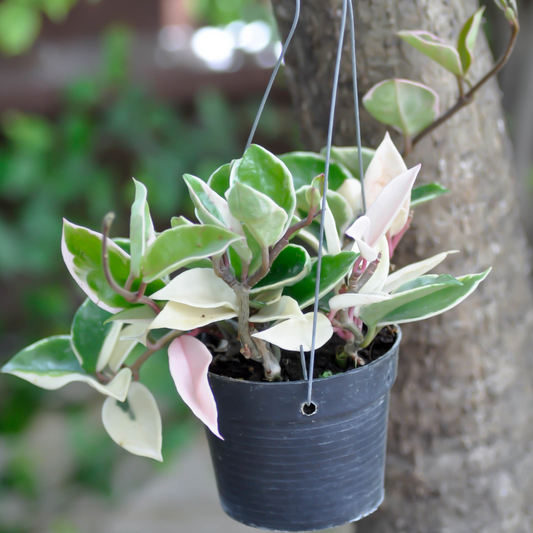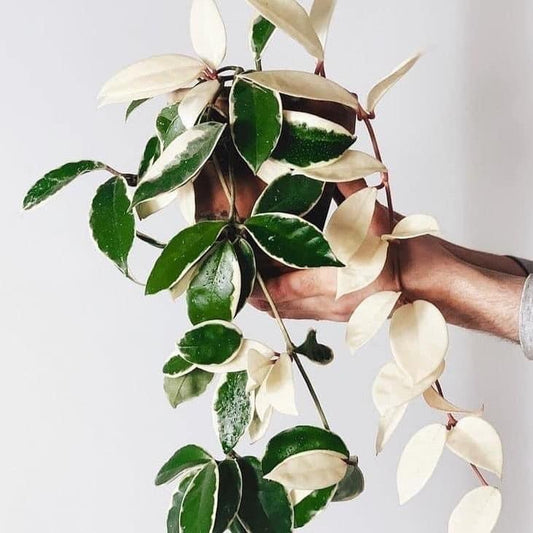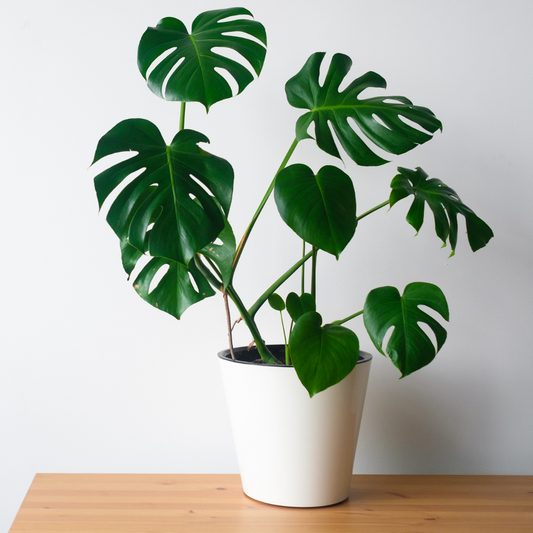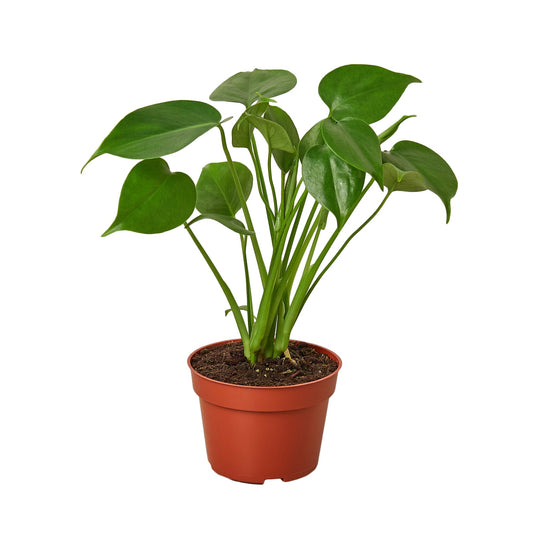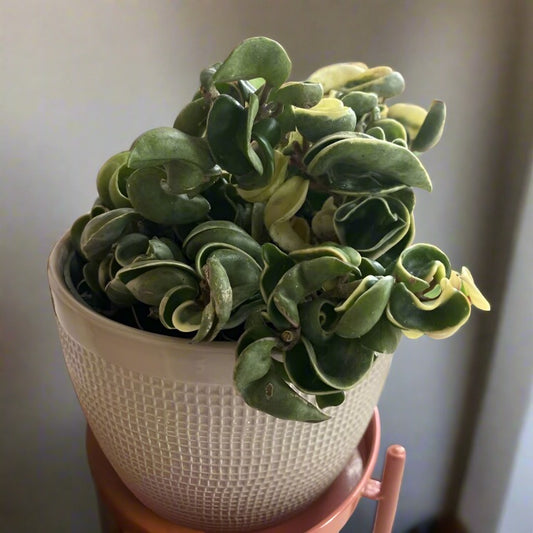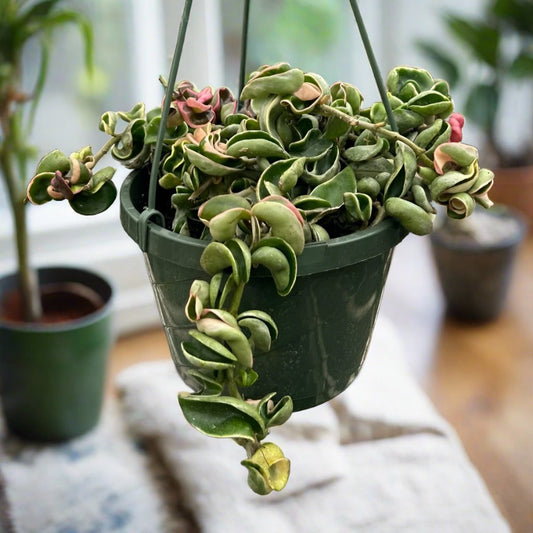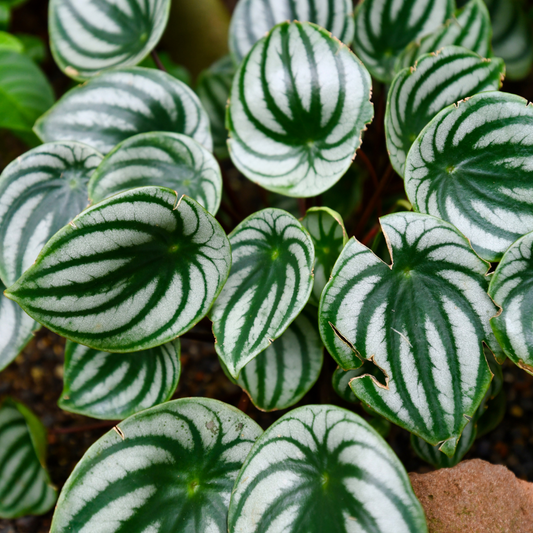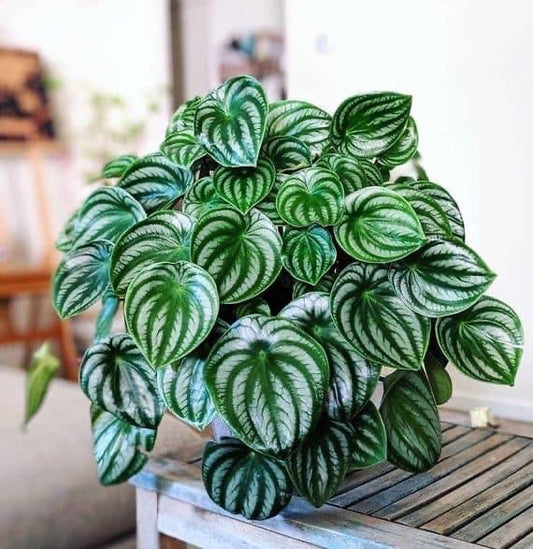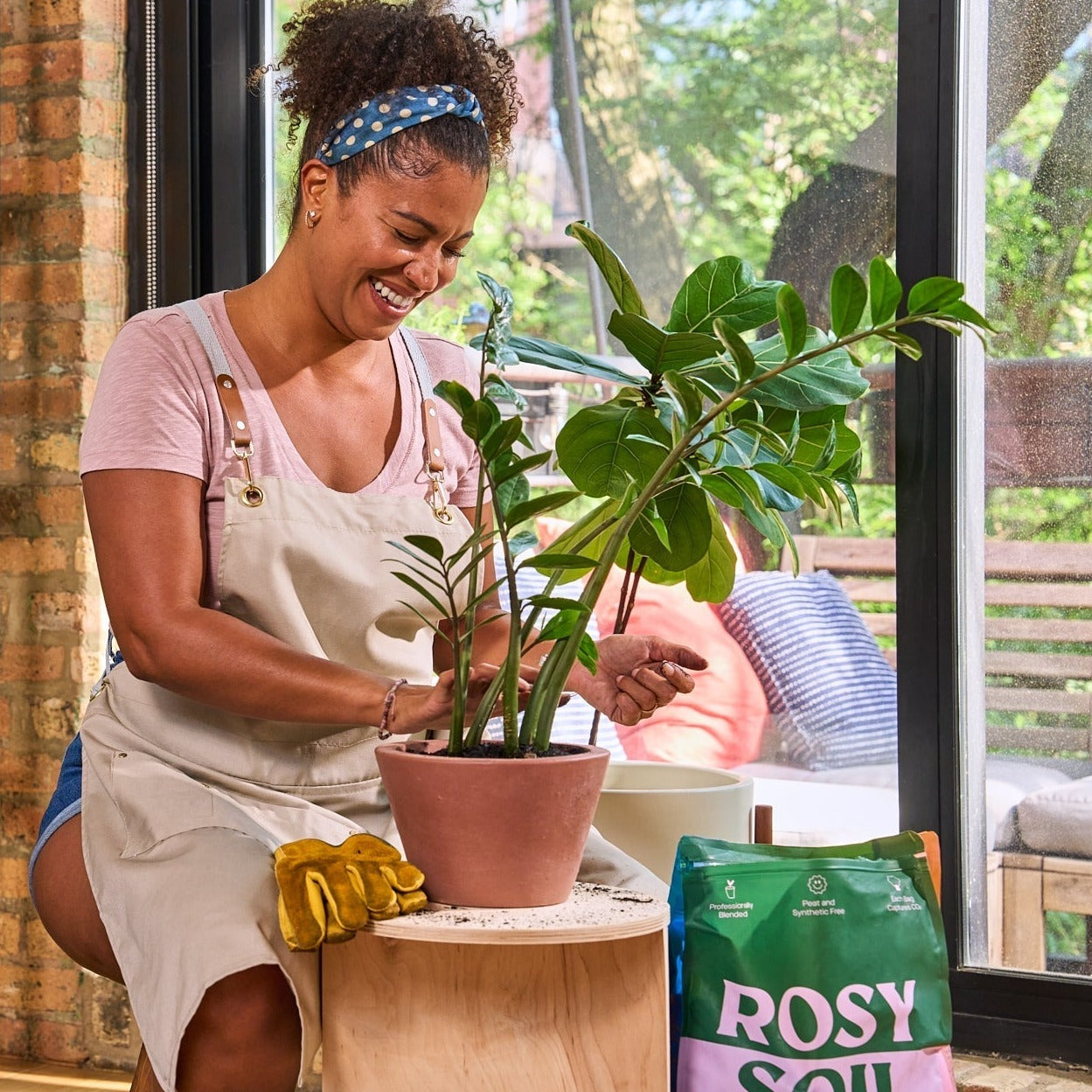Welcome to the lush, waxy world of Hoya plants, where beauty meets low-maintenance care! Perfect for both newbie plant parents and seasoned green thumbs, Hoyas offer a stunning array of colors and shapes. In this comprehensive guide, we'll explore everything from basic care to decorating with these charming plants, their pet-friendly status, and the intriguing differences between the Hoya Krimson Queen, Krimson Princess, and the mesmerizing Hoya Rope varieties.
The Alluring Appeal of Hoyas
Hoyas, often called wax plants due to their glossy leaves, are prized for their spectacular blooms and trailing growth, making them perfect for hanging baskets or high shelves. Their resilience and easy-care nature make them ideal for those who love plants but lack a green thumb.
Caring for Your Hoyas
Caring for Hoya plants is a breeze. They prefer bright, indirect light and well-draining soil. Watering should be moderate — allow the soil to dry out between waterings, and be sure to reduce watering in the winter months. Hoyas thrive in a humid environment, so consider misting them occasionally or placing a humidifier nearby.
Decorating with Hoyas
Hoyas are versatile in home decor. Their vining nature allows them to be styled as elegant hanging plants or as lush, draping additions to shelves and mantels. Their waxy, sometimes variegated leaves add texture and color contrast to any indoor space, enhancing its aesthetic appeal.
Pet-Friendly and Safe
One of the great advantages of Hoya plants is their non-toxicity to pets. They can be placed within reach of curious cats and dogs without worry, making them a favorite among pet owners.
Meet the Royals: Hoya Krimson Queen vs. Krimson Princess
Distinguishing between the Hoya Krimson Queen and Krimson Princess can be tricky. Both have stunning variegated leaves, but the Krimson Queen boasts a striking white border around the leaf edges, while the Krimson Princess typically has variegation in the leaf center. Both varieties add a royal touch to any collection but have slightly different light and care requirements due to their variegation.
The Charm of Hoya Rope: Variegated vs. Non-Variegated
The Hoya Rope, known for its twisted, rope-like vines, comes in variegated and non-variegated forms. The variegated version features leaves streaked with white or yellow, which require more light to maintain their color. In contrast, the non-variegated form is more forgiving and can thrive in lower light conditions.
FAQs about Hoya Plants
1. How often should I water my Hoya plants? Water every 1-2 weeks, allowing the soil to dry out between waterings. Reduce frequency during winter.
2. Can Hoyas tolerate low light conditions? They prefer bright, indirect light. Variegated types, like the Krimson varieties, need more light to maintain leaf patterns.
3. What is the best way to encourage Hoyas to bloom? Provide plenty of indirect sunlight, cooler temperatures in the winter, and use a blooming fertilizer in spring and summer.
4. Are Hoyas susceptible to any diseases? Watch for pests like aphids and mealybugs. Treat infestations with insecticidal soap or neem oil. Prevent root rot by avoiding overwatering.
5. How do I prune my Hoya plant? Prune in spring or early summer to maintain shape or remove unhealthy parts. Always cut near a node to promote new growth.



